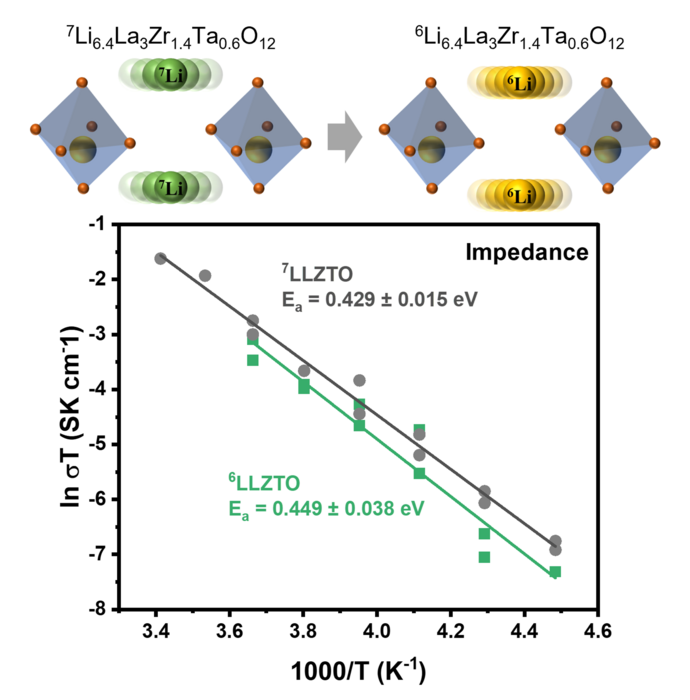This study is led by Prof. Shou-Hang Bo (Global Institute of Future Technology, Shanghai Jiao Tong University, Shanghai Jiao Tong University) and Prof. Jun Cheng (College of Chemistry and Chemical Engineering, Xiamen University). The study was performed by using isotope substitution approach to modulate the lattice vibration mode of solid-state electrolytes and to study the relation between the lattice vibration and ion transport.

Credit: ©Science China Press
This study is led by Prof. Shou-Hang Bo (Global Institute of Future Technology, Shanghai Jiao Tong University, Shanghai Jiao Tong University) and Prof. Jun Cheng (College of Chemistry and Chemical Engineering, Xiamen University). The study was performed by using isotope substitution approach to modulate the lattice vibration mode of solid-state electrolytes and to study the relation between the lattice vibration and ion transport.
Understanding the correlations between lattice dynamics (phonons) and ion transport is important for improving the ionic conductivity of solid-state electrolytes. This understanding largely hinges on selective tuning or excitation of specific phonon modes without changing the chemical environments of atoms, which is, however, challenging to be achieved. In this work, 6Li isotope substitution to selectively change the phonon properties associated with lithium, without introducing additional defects or disorders which would affect the ion transport properties. The changes in the phonon modes were then related to ion transport properties through impedance measurements and deep potential molecular dynamics simulations. The results demonstrate that lower lithium vibration frequency leads to higher ionic conductivity and lower activation energy in the garnet solid-state electrolyte of Li6.4La3Zr1.4Ta0.6O12. The isotope substitution method can further quantitatively to assess the effect of changes in lattice vibrations on other physical parameters during ion transport, and the results show that the increase in the vibration frequency of lithium ions leads to a 1.08-fold increase in the attempt frequency and a 3.05 J K−1 mol–1 increase in migration entropy. This work suggests the effective isotope substitution method can decouple the effect of phonon modes to ion transport from that of other complex structural factors. The obtained insights can contribute to innovative understanding of ion transport in solids and strategies to optimize the ionic conductivity of solid-state electrolytes.
See the article:
Correlate phonon modes with ion transport via isotope substitution
https://www.sciengine.com/SCC/doi/10.1007/s11426-022-1488-9
Journal
Science China Chemistry
DOI
10.1007/s11426-022-1488-9




